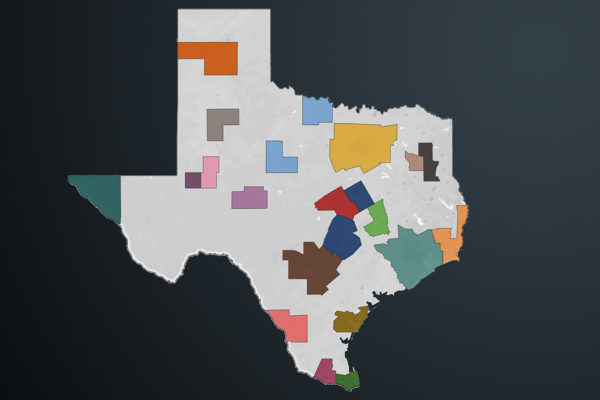AUSTIN, Texas — A new pandemic model of COVID-19 shows the positive role social distancing can play in preventing the spread of the illness in areas across the state. The report by researchers in The University of Texas at Austin’s College of Natural Sciences projects significantly higher numbers of cases of infection, hospitalizations, intensive care unit admissions and deaths in 22 Texas communities under scenarios in which social distancing measures are moderate.
Residents of the 22 communities, which include the state’s largest metropolitan areas, can find graphs for their region based on a range of social distancing scenarios.
The team published the analysis in advance of scientific peer review due to the time-sensitive nature of the subject. Their models clarify that communities implementing stringent social distancing will be less likely to see hospital capacities overwhelmed during the weeks ahead.
The research team found that reducing daily contacts in the community by 50% – or even 75% – may not be sufficient in some Texas cities to prevent an unmanageable surge in COVID-19 hospitalizations. However, the model suggests that reducing daily contacts between people by 90% would be expected to “flatten the curve” through the spring and summer in each of the cities.
“Our projections indicate that COVID-19 may quickly exceed health care capacity across Texas cities and that extensive social distancing measures can both delay and diminish pandemic surges,” the authors write.
Lauren Ancel Meyers, a professor of integrative biology and statistics and data sciences, leads the team behind the U.S. COVID-19 Pandemic Model at UT Austin.
The model’s findings are consistent with those of models developed by epidemiologists from around the world. The number of infections was highest under counterfactual scenarios in which no social distancing measures were adopted in any community. However, the extent of social distancing practiced greatly affected the peak number of infected people, hospitalized patients and deaths in each community.
“The number of in-person interactions people have with one another matters,” Meyers said. “For the Austin-Round Rock metropolitan area, our models project that we have to eliminate well over half of our typical daily contacts to prevent a critical shortage in hospital and ICU capacity in the next 12 weeks.”
Meyers creates mathematical models that use demographics and information about the virus to develop a picture of how it spreads in a metropolitan area and to provide decision makers information about realistic future scenarios based on that data. Powerful computers at UT’s Texas Advanced Computing Center (TACC) aid in the modeling, which uses available data about disease transmission.
Meyers and the other authors explain that much remains to be discovered about how the coronavirus that causes COVID-19 spreads, especially in people with mild or no symptoms.
In 2012, Meyers and colleagues at TACC developed a pandemic toolkit to help local health authorities make decisions about resources, such as where and when to place ventilators in facilities in order to keep deaths to a minimum. The U.S. COVID-19 Pandemic Model, like the prior pandemic toolkit, provides analyses to support real-time decision making during emergency situations.
Meyers’ model shows that with current stringent distancing measures in place in many metropolitan areas, the pandemic is less likely to cause unmanageable surges in health care this summer. Based on characteristics of the coronavirus, the model assumes the number of new infections in a community would double about every four days without social distancing, and that about 5% of people with COVID-19 would have a case serious enough to warrant hospitalization.
Meyers’ research is funded by the National Institutes of Health, and she holds UT Austin’s Denton A. Cooley Centennial Professorship.

